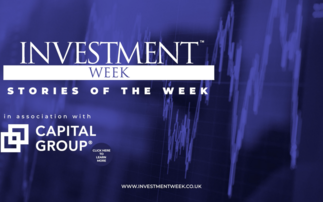Industry voice: Wealth managers' exposure to passive investments, including sector-based strategies, is becoming increasingly creative and moving outside traditional product areas, according to a recent roundtable discussion hosted by Investment Week in association with the SPDR ETF team at State Street Global Advisors.
Speaking at the roundtable, Claire Perryman, head of SPDR ETF Business in the UK, pointed out that over the past decade there has been a shift away from wealth managers solely utilising the vehicles in areas like US large-cap equities or commodities, with the implementation of the Retail Distribution Review at the start of 2013 marking an inflection point.
"We started to see people blending active and passive together or people creating funds of passives," she noted. "That really started to change the dynamic and utilisation of ETFs and passive instruments in portfolios."
More recently, she said, SPDR has noticed a further evolution in the way professional investors use the products. For example, in the fixed income space they are being used by investors who perhaps in the past would buy single bonds, as well as for greater exposure to emerging market debt or simply to adjust duration.
Commenting on his firm's use of the vehicles, Mohsin Bukhari, head of investment research at Carrington Investments, said the group only adopted passive investments at the start of this year, as they predominantly used active managers in the past.
"We had become more aware of active managers that are not necessarily outperforming their benchmarks over prolonged periods of time," he said. "As a result, we started investing in smart-beta products within the same parts of the market which have done just as well, if not better, but at a third of the cost. That is something that is new for us this year and I think will evolve looking forwards."
James Klempster, head of investment management at Momentum Global Investment Management, added: "We started using passives a bit earlier, post the financial crisis. Interesting reasons for using passive strategies that we have found helpful in the past are to reduce strategy selection risk and tighten up tracking errors sometimes."
Seamus O'Ceallaigh, director at Credit Suisse, said the team traditionally used ETFs for tactical asset allocation purposes on a short-term basis.
"As we have changed our strategic asset allocation over time, introducing sub-asset classes in fixed income like emerging market debt and convertible bonds for example, often the first port of call is to find a suitable ETF to fit that space in the short term before we find a manager, but sometimes we have more of a buy-and-hold attitude towards that ETF, rather than just using it for a tactical overweight or underweight," he explained.
SPDR's Perryman said she had also noticed wealth managers' longer holding periods for passive products which often extend beyond 12 months, so they become "less of a tactical satellite but are trending towards the core".
Alex Moore, head of collectives research at Rathbone Investment Management, said he tends to find the use of passives is very selective by region and asset class, depending traditionally on the efficiency of the market.
"Access is also an issue. In terms of asset classes such as gold, for example, we do not have a vault. We have no real means of storing gold bars and transacting them. Where it is actually very tricky for us or for an individual client, that has been a really important factor," he added.
In addition, Jose Garcia-Zarate, associate director of passive strategies research for Morningstar Europe, said ETF discussions have evolved from focusing on whether synthetic or physically-replicating funds should be used, to asset allocation decisions and understanding the underlying index.
"Due diligence on the index is paramount before actually engaging in anything else," he said. "Within fixed income, for example, no two indices are exactly the same in terms of the exposure you get or the pricing sources they may use to calculate the index. An S&P 500 ETF is going to be exactly the same, but a high yield ETF is not going to be the same from different providers."
Client perspective
However, while the usage of ETFs among wealth managers seems to have expanded and evolved for the most part, some delegates were unsure whether the merits of passive investing are understood by end-investors.
StJohn Gardner, managing director and head of investment management at Arbuthnot Latham, said clients may not know the difference between active and passive investments. However, he believes they are likely to understand there is less regulatory risk and lower costs in tracking indices, as opposed to buying an active fund.
"I think they will see ETFs as being cheap and uncomplicated, and would be quite happy with that," he explained.
"From our perspective, there is going to be a push towards lower fees and therefore wealth managers need to have, as part of their toolkit and proposition, some investments that are very cheap and simple."
Momentum's Klempster said his firm predominantly distributes to IFAs and wealth managers.
"I think that cost pressure is very keenly felt at that level," he commented. "The majority of people would take that over almost anything else at the moment, almost myopically. You need to be very clear in terms of the pros and cons of both active and passive. That is not to say they are mutually exclusive. You tend to find most portfolios are being blended but, if anything, it is almost harder to make the case now for active over and above passive."
Sector exposure
Meanwhile, the SPDR team said there had also been a noticeable uptick in
recent years in the use of sector ETFs by European investors.
"If you think back to the election of Donald Trump as US President in November 2016, we really saw a change at that point," SPDR's Perryman said. "Prior to that, European investors historically had done a bit of sector investing but, if you compare it to the US, it is night and day.
"Obviously, there were some catalysts in the market. Healthcare and financials were big stories and the drivers of return and the deviations between different sectors really became apparent."
The group also looked at the growth of the wider UCITS ETF industry since the election of Trump and found it had increased by 46%, while the sector component had grown at a faster rate of 68%.
Credit Suisse, senior portfolio manager Séamus ó Ceallaigh commented: "[Sector investing] is something we are looking at and this is a timely discussion for this idea. For example, for technology exposure we have used the Nasdaq in the past to naturally get more of a technology overweight."
Richard Champion, deputy chief investment officer at Canaccord Genuity Wealth Management, has been using sector strategies for a number of years.
"Three or four years ago, we were playing US defence through an ETF in the US," he explained.
"We have expanded our use of asset class ETFs, whether that is US financials or sectoral ETFs in the US particularly, but also in Europe. We are doing so, both in traditional sectors but also accessing quite difficult areas like robotics and AI on an individual basis, while gaining decent diversification across them."
However, Peter Sleep, senior investment manager at Seven Investment Management, does not invest in sector ETFs, as he argues that it is very difficult to beat an entire market by just looking at a single part.
"We have been investors in ETFs for more than 15 years," he said. "But over the last few years we have reduced our exposure to ETFs as we have found it cheaper and more efficient to use other instruments such as funds, futures or buying the underlying securities."
Communication Services sector
Finally, our roundtable discussion focused on a major shake-up for investors, as the Global Industry Classification Standard (GICS) has been rebooted, leading to the creation of the new Communication Services sector.
This will include some of the biggest names in US technology, such as Facebook and Alphabet (parent company of Google), as well as Netflix, Disney and Comcast. Meanwhile, Alibaba Group and EBay will join e-commerce giant Amazon in the Consumer Discretionary sector.
Rebecca Chesworth, senior ETF strategist at SPDR ETFs, said the recent changes have made ETF sector investing more efficient.
"Before the change, you couldn't invest in Telecommunication Services as a sector ETF even if you wanted to because it was too small - there were just three S&P stocks in there. There was too much idiosyncratic risk," she said. "I have met a lot of clients across Europe and Asia who are also relieved there is another way to play technology.
"In terms of feedback, we have been hearing good things about Communication Services. People like the quality of names in there and the low gearing. Rather than just having to invest in today's winners, which we know can go down as well as up, you also have that next set of winners."
Weixu Yan, investment manager at Close Brothers Asset Management, has altered the positioning of his portfolios since the sector changes, and is a "happy buyer" of the new Communication Services sector.
"Currently in the US, we have a technology overweight and we are buying some of the new Communication Services ETFs, rotating out of the Consumer Discretionary sector," he explained.
"Most of the other investment managers at Close Brothers have not really changed their positioning because they have gone down the active route or, if they do buy passives, they hold the likes of S&P 500 trackers. If you buy the S&P 500, these sector changes do not make much difference.
"For me, I held a Consumer Discretionary ETF and I decided to get rid of this and go into the Communication Services sector. The main reason is that I already get Amazon exposure through my Nasdaq and S&P 500 exposure."











